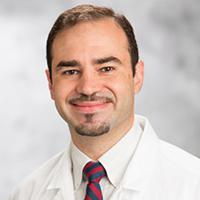
Dr. Robert D Little MD
Neurologist | Neurology with Special Qualifications in Child Neurology
1919 E Thomas Rd Building B Phoenix AZ, 85016About
Dr. Robert Little is a distinguished Neurologist in Phoenix, AZ. Dr. Little specializes in diagnosing, treating, and managing disorders of the brain and nervous system. With expertise in handling complex conditions like epilepsy, multiple sclerosis, and migraines, Dr. Little employs advanced techniques and personalized treatment plans to improve patient outcomes. As a neurologist, Dr. Little is committed to staying abreast of the latest developments in neurological research and therapies.
Education and Training
University of Alabama School of Medicine 1999
Indiana University School of Medicine
Board Certification
UrologyAmerican Board of UrologyABU
Provider Details
Treatments
- Headaches
- Cerebral Palsy
- Epilepsy
- Learning Disabilities
- Bell's Palsy
- Tremors
- Migraine
- Abnormal Gait
Fellowships
- (Child Neurology), CHILDREN'S MEMORIAL HOSPITAL/NORTHWESTERN UNIV., CHICAGO, IL 2003
Dr. Robert D Little MD's Practice location
Practice At 1919 E Thomas Rd Building B
1919 E Thomas Rd Building B -Phoenix, AZ 85016Get Direction
Dr. Robert D Little MD's reviews
Write ReviewPatient Experience with Dr. Little
Recommended Articles
- What Is ALS : Common symptoms of ALS
ALS, or amyotrophic lateral sclerosis, is a neurological disorder that many people refer to as Lou Gehrig's disease. This is a progressive disease in which the nerves that control the voluntary movements in the body deteriorate. As the nerve cells degenerate, it leads to paralysis and then death...
- Veteran's Son with Muscular Dystrophy Gets A Generous Donation From "Warriors in the Field"
Like so many young boys out there, 13-year-old Braden Allen loved nothing more than to climb the family hunting blind and spend the day outdoors with his father. Unfortunately, after a diagnosis of muscular dystrophy, that hobby and the wonderful bonding time had to be set aside. ...
- Researchers Discover Algorithm for Early Diagnosis of Parkinson’s Disease
Parkinson’s disease is a type of condition that affects the brain wherein a low level of dopamine would limit the person’s movement. This low dopamine level would be the main cause of Parkinson’s disease as a whole, although it is still not known as to what causes the low levels of dopamine in...
- Common Multiple Sclerosis Treatments: An Overview
A debilitating disease that was once the face of a crushing and “hopeless” diagnosis has evolved from having one effective treatment to multiple effective treatments. Longtime sufferers who didn’t respond to one medication now have options to try others, to participate in a clinical trial or...
- What Are the Signs and Symptoms of Stroke?
Stroke can occur at any time of your life. However, those who have attained 65+ years are more prone to getting a stroke. It is also important to note that other factors such as family history, alcohol, smoking, medical history, and your ethnicity can trigger the occurrence of stroke. If you think...
- Muscular Dystrophy: Cellular Antennae Play Key Role in Muscle Loss
As humans age, it is common for muscle cells to diminish and be exchanged with fat cells. It is a slow process as one cell after another is exchanged. However, this process quickens when a muscle is injured. The worst case occurs in muscle wasting diseases like Duchenne muscular dystrophy. A...
Nearby Providers
- Dr. Constantine G. Moschonas M.D.9746 North 90th Place Scottsdale Arizona 85258
- Dr. Darry Johnson MD6320 W Union Hills Dr Bldg A Glendale AZ 85308
- Dr. Mohamed S. Teleb M.D.1520 S Dobson Rd Mesa AZ 85202
- Dr. Tamara Zach M.D.22044 N 44th St Phoenix AZ 85050
- Dr. Ales Hlubocky M.D.13400 E Shea Blvd Scottsdale AZ 85259
- Nirmala Aryal25085 North 72nd Avenue Peoria Arizona 85383
Nearest Hospitals
PHOENIX CHILDREN'S HOSPITALl
1919 EAST THOMAS ROAD PHOENIX AZ 85016LOS NINOS HOSPITAL, INC.l
2303 EAST THOMAS PHOENIX AZ 85016PHOENIX INDIAN MEDICAL CENTERl
4212 NORTH 16TH STREET PHOENIX AZ 85016








